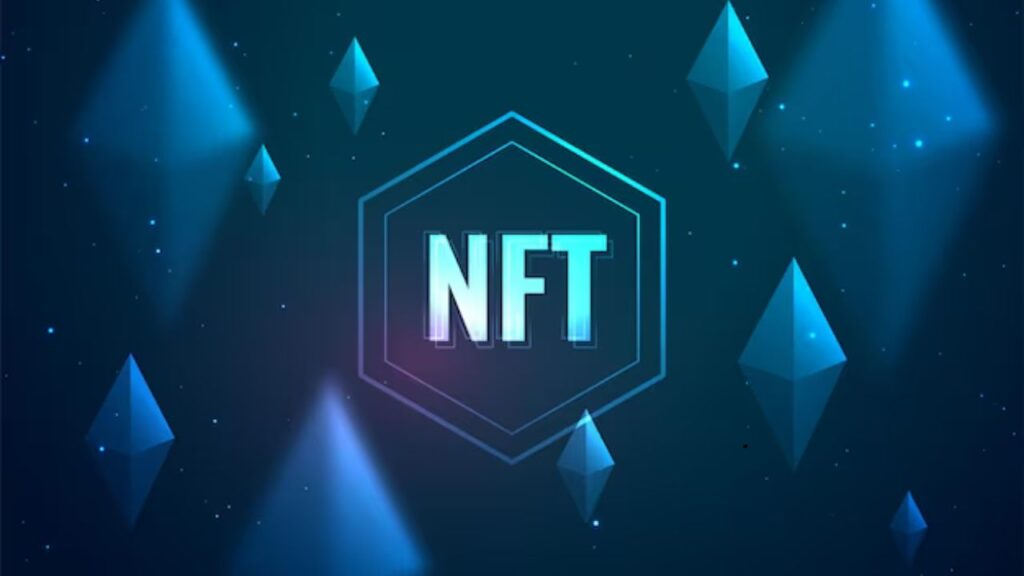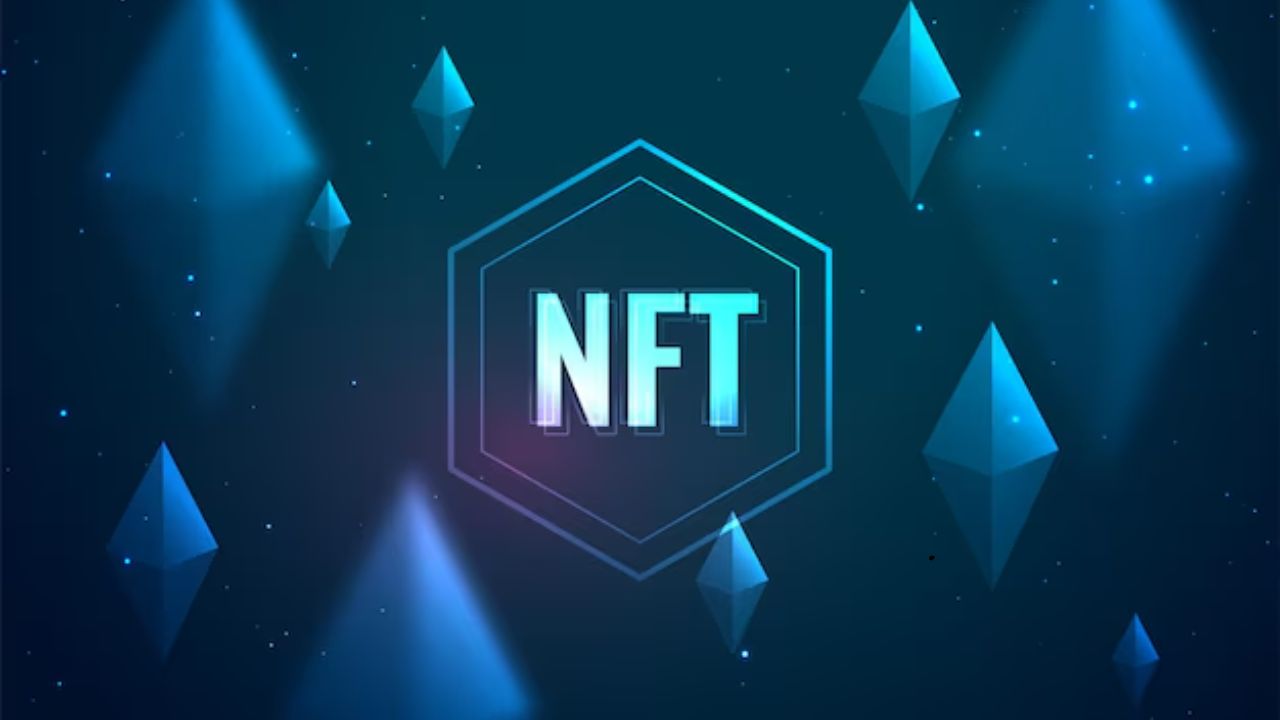In recent years, Non-Fungible Tokens (NFTs) have taken the digital world by storm, revolutionizing the way people buy, sell, and own digital assets.
From digital artwork and music to virtual real estate and collectibles, NFTs have created a new ecosystem that blends technology with creativity and ownership.
This article explores NFTs in detail, covering what they are, how they work, their use cases, benefits, risks, and how you can invest in them.
What is an NFT?

An NFT (Non-Fungible Token) is a type of digital asset that represents ownership or proof of authenticity of a unique item, stored on a blockchain.
Unlike cryptocurrencies such as Bitcoin or Ethereum, which are fungible (each unit is identical and interchangeable), NFTs are unique and cannot be replaced.
Example to Understand NFTs:
- A Bitcoin is like a dollar bill—you can exchange it for another dollar bill, and both hold the same value.
- An NFT is like a rare trading card or a painting—no two are exactly the same, and each has a unique value.
NFTs can be anything digital, including artwork, music, GIFs, tweets, video game items, and virtual real estate.
How Do NFTs Work?
NFTs are built using blockchain technology, primarily on the Ethereum blockchain (though other blockchains like Solana, Binance Smart Chain, and Flow also support NFTs).
Here’s how NFTs function:
- Creation (Minting): Artists or creators mint (create) an NFT by uploading their digital asset to an NFT marketplace. This process generates a smart contract, which contains details about the asset, ownership, and metadata.
- Storage on the Blockchain: The NFT is stored on a blockchain, ensuring it cannot be altered, duplicated, or deleted.
- Buying and Selling: NFTs are bought and sold through marketplaces like OpenSea, Rarible, and Foundation using cryptocurrency (mostly Ethereum). Transactions are recorded on the blockchain, proving ownership.
- Resale and Royalties: Some NFTs come with smart contracts that allow creators to earn royalties every time the NFT is resold. This benefits artists by providing ongoing revenue.
Popular Use Cases of NFTs
A. Digital Art & Collectibles
- Artists can sell digital artwork as NFTs, ensuring that buyers get a verifiable, unique piece.
- Famous NFT sales include Beeple’s digital artwork sold for $69 million at Christie’s auction.
B. Gaming & Virtual Items
- NFTs in games allow players to own and trade in-game assets like weapons, skins, and virtual land.
- Example: Axie Infinity and Decentraland use NFTs for digital ownership of characters and land.
C. Music & Entertainment
- Musicians can release songs, albums, and concert tickets as NFTs, giving them direct earnings without intermediaries.
- Example: Kings of Leon released an album as an NFT, generating over $2 million.
D. Virtual Real Estate
- Platforms like Decentraland and The Sandbox allow people to buy virtual land as NFTs, which can be developed, sold, or rented.
E. Social Media & Influencer Content
- Tweets, videos, and Instagram posts can be turned into NFTs.
- Example: Twitter’s founder, Jack Dorsey, sold his first tweet as an NFT for $2.9 million.
Benefits of NFTs
1. Proof of Ownership
NFTs provide verified proof of ownership on the blockchain, making them tamper-proof and impossible to duplicate.
2. Scarcity & Rarity
NFTs are unique or limited in quantity, creating a sense of scarcity and making them valuable.
3. Royalties for Creators
Artists and musicians can earn lifetime royalties whenever their NFT is resold. This is not possible in traditional art sales.
4. Security & Transparency
NFT transactions are recorded on a public blockchain, ensuring that ownership and authenticity are easily verified.
5. New Revenue Streams
NFTs open up new opportunities for artists, game developers, and influencers to monetize their content.
Risks and Challenges of NFTs
1. Market Volatility
The NFT market is highly speculative and prices can fluctuate drastically. Some NFTs gain immense value, while others become worthless.
2. Environmental Impact
Ethereum-based NFTs consume a lot of energy due to the Proof-of-Work (PoW) mining process, leading to concerns about carbon footprints. However, Ethereum is shifting to Proof-of-Stake (PoS), which will reduce energy consumption.
3. Scams and Fraud
There have been fake NFTs, stolen artworks, and phishing scams where hackers trick users into revealing private keys.
4. Copyright and Ownership Issues
- Buying an NFT does not always give commercial rights to the artwork—some NFTs only grant ownership of the digital copy but not full usage rights.
- Many artists have reported their work being stolen and minted as NFTs without permission.
How to Buy and Sell NFTs
Step 1: Choose a Crypto Wallet
To buy NFTs, you need a crypto wallet that supports Ethereum (or the blockchain the NFT is built on). Popular wallets include:
- MetaMask (browser extension & mobile app)
- Trust Wallet (mobile app)
- Coinbase Wallet (secure & easy to use)
Step 2: Buy Cryptocurrency
Most NFT marketplaces accept Ethereum (ETH), so you’ll need to buy ETH on an exchange like:
- Binance
- Coinbase
- Kraken
Step 3: Select an NFT Marketplace
Popular platforms for trading NFTs include:
- OpenSea (largest NFT marketplace)
- Rarible (decentralized NFT platform)
- Foundation (exclusive for high-quality art NFTs)
Step 4: Buy an NFT
- Browse NFTs on the marketplace.
- Place a bid (if it’s an auction) or buy instantly.
- Approve the transaction in your crypto wallet.
Step 5: Selling NFTs
- Connect your wallet to an NFT marketplace.
- List your NFT for sale at a fixed price or in an auction.
- Pay the listing fee (known as “gas fees”).
- Once sold, receive the cryptocurrency in your wallet.
Are NFTs a Good Investment?
NFTs can be a profitable investment, but they are highly speculative and risky. Here are some tips before investing:
- Do thorough research on the NFT project, artist, and community.
- Invest only what you can afford to lose.
- Look for long-term value, not just hype.
- Diversify your investment portfolio.
Future of NFTs
NFTs are not just a trend—they are evolving into metaverse applications, digital identity, and real-world assets. Some potential future developments include:
- NFTs in real estate (buying physical property via blockchain).
- Integration with the Metaverse (NFTs will be key to virtual worlds).
- Digital identity and certifications stored as NFTs.
As technology advances, NFTs could revolutionize ownership, entertainment, and commerce in ways we have yet to imagine.
Conclusion
NFTs are transforming the digital landscape by giving creators more control and offering new ways to buy and sell digital goods.
While they offer exciting opportunities, they also come with risks that should not be overlooked.
Whether you’re an artist, collector, or investor, understanding the fundamentals of NFTs is crucial before jumping into this rapidly growing space.
Would you consider investing in NFTs? Let me know your thoughts! 🚀
